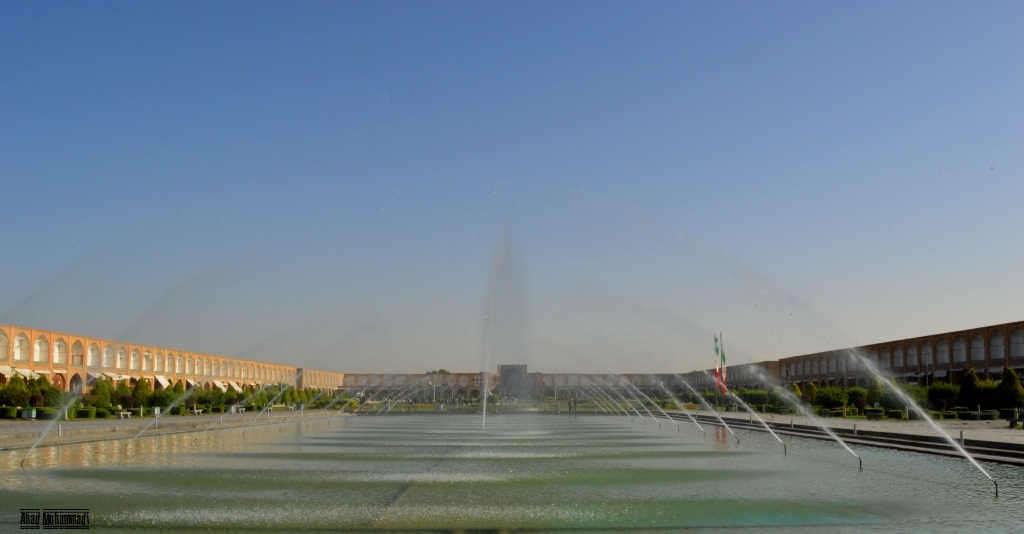
The Naghsh-e Jahan Square itself, 510 m/1,670 feet long by 165 m/550 feet wide, framed by a wall of blind arcades concealing a trading street full of shops, was a monumental work of art, splendidly complemented by the imposing perspective of the tree-lined Chahar Bagh bordered with canals of running water over more than one and a half km/one mile. But the buildings which surrounded this square towards the end of the reign of Shah Abbas I, to the south the majestic royal mosque of Masjid-i Shah (probably begun in 1021/1612–13), to the east the Masjid-i Shaykh Lutf Allah (begun 1012/1603), to the north of the royal bazaar with its monumental gateway (built in 1029/1620), could be seen above all as worthy companions to the Ali Qapu palace which had been constructed by Shah Abbas I on the basis of a Timurid pavilion, and which gave the monarch a panoramic view of the esplanade and its surroundings from the raised terrace of its talar . This latter place, together with the Chehel Sutun palace which was soon erected not far away and inside the same enclosure, and whose construction must also have been started in 1006/1598, thus formed the essential preliminary starting-point in Shah Abbas’ plan to convert Isfahan above all into a “jewel box city” for his own residence.
Moreover, the importance of this “royal city” situated between the Mayd_n-i Shah and the Chahar Bagh continued to be strengthened under succeeding monarchs by the building of other sumptuous pavilions. But one last Safavid building for religious purposes from the 12th/18th century remains to be noted with the construction between 1118/1706 and 1126/1714 of the Mader-i Shah madrasa and the adjoining caravanserai, which has also survived until today (see Fig. 54). Mention must be made, too, of those Armenian churches of the New Julfa district, in which can still be seen the fundamental characteristics of the imperial style dominant at the time when they were founded by an emigré colony.